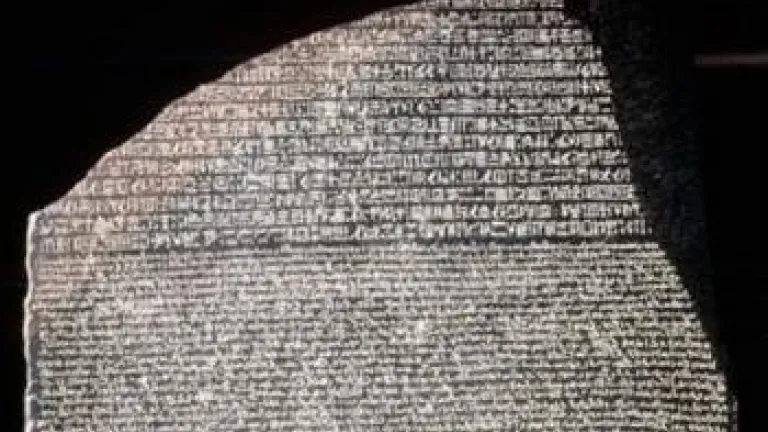God, Science and the Bible: Archaeology supports story of Samson and Philistine temple
Archaeology has been found to support yet another biblical story—the account of mighty Samson and his death in a Philistine temple.
Samson, you may recall, was the Israelite hero whose strength was legendary among the Israelites and their enemies, the Philistines. Tricked, captured and blinded by the Philistines, he was put to work grinding grain as a beast of burden. The story of Samson concludes in Judges 16:23-30:
"Now the lords of the Philistines gathered together to offer a great sacrifice to Dagon their god, and to rejoice . . . So it happened, when their hearts were merry, that they said, 'Call for Samson, that he may perform for us.' So they called for Samson from the prison, and he performed for them. And they stationed him between the pillars . . .
"And Samson took hold of the two middle pillars which supported the temple, and he braced himself against them, one on his right and the other on his left. Then Samson said, 'Let me die with the Philistines!' And he pushed with all his might, and the temple fell on the lords and all the people who were in it. So the dead that he killed at his death were more than he had killed in his life."
Critics, of course, have doubted the story and called it a myth. They have argued that a Philistine temple would not have had two central pillars supporting the roof since this wasn't a typical architectural design of Middle Eastern temples.
But after the remains of two Philistine temples have been excavated, what do they reveal? Both had two main pillars supporting the roof.
One of the Philistine temples is at Tell Qasile, now part of the modern city of Tel Aviv. Archaeologist Amihai Mazar found the remains of a small Philistine temple in the 1970s, and sure enough, he discovered two column bases for a pair of central pillars supporting the roof. They were close enough together that a large man could reach both of them at once.
Some 20 miles away, at the Philistine site of ancient Ekron, archaeologist Trude Dothan discovered another temple in the 1990s with the same characteristics—two central pillars supporting a roof.
The city of Gath, where Samson's account takes place, has not been excavated, as a modern city has been built on top of the remains. Yet, being one of the main Philistine cities, it is reasonable to imagine that it would have had a much larger temple, holding many more people.
Archaeologist Bryant Wood explains the significance of the discoveries: "Two Philistine temples have been uncovered by archaeologists. . . Both temples share a unique design—the roof was supported by two central pillars!
"The pillars were made of wood and rested on stone support bases. With the pillars being about six feet apart, a strong man could dislodge them from their stone bases and bring the entire roof crashing down. The archaeological findings match the Biblical story perfectly and attest to the plausibility of the account . . .
"The Bible writer knew his facts. He knew that Philistine temples were supported by two pillars and that this was how Samson pulled the temple down. The report is that of an eye-witness, again demonstrating that indeed the Bible is the world's most accurate textbook" ("Samson and the Temple of Dagon," Bible and Spade, 1974, pp. 53-54).








